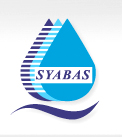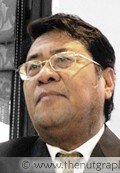
SELANGOR, apparently, is facing a water crisis. On 15 July 2012, Selangor’s sole water distributor Syarikat Bekalan Air Selangor (Syabas) announced its application to carry out water rationing exercises in Selangor, Kuala Lumpur and Putrajaya.
The Selangor government responded with puzzlement. Representatives said the state’s seven dams were filled to the brim. But Syabas countered that regardless of the dams’ water levels, Selangor’s 34 water treatment plants are operating at full — and some over-capacity. It said overall water reserve levels were down to two percent instead of the “safe mark” of at least 20.
After the Selangor government proposed to take-over Syabas and a Special Cabinet Committee on the Selangor Water Issue refused Syabas’s proposal, Syabas backed down. Water rationing was a “long-term plan” but it wasn’t necessary to implement it now, said its chief operating officer Datuk Lee Miang Koi.
So were the 7.5 million consumers in Selangor, Kuala Lumpur and Putrajaya taken for a ride? Is there or is there not a water crisis and what is being done to ensure it doesn’t happen?
Water crisis?
There is currently no widespread water shortage across the state and two neighbouring federal territories, according to a Selangor government task force set up to monitor Syabas’s daily operations.

The task force led by state secretary Datuk Khusrin Munawi and staffed with water experts and Selangor Economic Planning Unit (UPEN) officers also uncovered something revealing. Selangor’s 34 treatment plants are jointly capable of treating up to 4,807 million litres of water per day (MLD). But, Syabas is only capable of distributing up to 4,411 MLD. So even if the treatment plants fulfilled their full potential in their water treatment capacity, Syabas still can’t distribute all of it. Moreover, an ongoing mitigation project will reportedly boost the treatment plants’ capacity to 5,139 MLD in March 2013.
In addition, up to 1,389 MLD is lost due to pipe leakages and theft, also known as non-revenue water. Only some 2,944 MLD treated water reaches consumers. A 32% of non-revenue water is extremely high compared to five percent in Singapore and seven percent in Germany.
Syabas has said that the Selangor government needs to approve the Sungai Langat Two treatment plant to alleviate the water crisis. The multi-billion project involves transferring and treating raw water from Pahang. Federal government ministers also support the project.
But why push for a mega project when Syabas can’t even distribute all the water it treats? And why doesn’t Syabas fix the pipe leakages and theft before advocating a multi-billion ringgit interstate water transfer project?
Non-revenue water
Syabas says the Selangor government is to blame for freezing its capital expenditure programme and thereby jeopardising efforts to bring down non-revenue water. But federal lawmaker Tony Pua pointed out in a 7 August public forum that the state has no obligation to fund the private company.

“The [concession] agreement says Syabas may request for funding from the state. But [there are] no obligations on the part of the state to fund Syabas’s pipe-replacement programmes,” said the Petaling Jaya Utara Member of Parliament in an email to The Nut Graph on 17 Aug 2012.
The Selangor government has taken issue with Syabas’s financial management. It sought to terminate the concession agreement with Syabas in 2008 as an audit report found the company had breached contract terms. This included awarding up to 72% of contracts, worth RM600 million, in direct negotiations instead of via open tenders as stipulated in the 2004 concession agreement.
Old spat
The recent water spat is but an extension of the three-year deadlock over the state’s water restructuring exercise.

Menteri Besar Tan Sri Khalid Ibrahim’s administration has been trying to restructure the fragmented water industry and terminate what it claims are lopsided concession agreements with the existing water concessionaires.
Three companies — Puncak Niaga Sdn Bhd (PNSB), Konsortium Abass Sdn Bhd (Abass) and Syarikat Pengeluar Air Sdn Bhd (Splash) treat the raw water from dams. Syabas distributes it to consumers. The Selangor government says it can improve efficiency and keep water tariffs low if it restructures the water sector by taking over the four companies. It offered RM5.7 billion for them in February 2009 and revised it upwards to RM9.3 billion in June 2009 after the initial bid was rejected.
Splash, a Gamuda subsidiary, and Selangor-owned Abbas accepted the RM9.3 billion deal. But, Syabas and PNSB, both owned by Puncak Niaga Holdings Bhd, snubbed the offer. Puncak Niaga Holdings executive chairperson Tan Sri Rozali Ismail was formerly an Umno Selangor treasurer.
It cannot be proven that partisan interest came into play but the refusal of the deal is certainly in line with how the federal government has dealt with Selangor’s water-restructuring efforts. It has repeatedly ignored Selangor’s requests to terminate the concession agreement with Syabas. As the agreement is signed between Syabas, the Selangor government and the federal government, Selangor can’t terminate the agreement without the federal government’s agreement. The federal government also refused public disclosure of the concession agreement, which is classified under the Official Secrets Act. It has also not exercised its power under the Water Services Industry Act 2006 to intervene and resolve the impasse. Under the Act, the federal government may assume control of the concessionaire’s business if it is deemed necessary for “national interest”.
One has to ask whether the federal government is acting in good faith when it was previously supportive of Selangor’s investment arm Kumpulan Darul Ehsan Bhd’s plan to consolidate the fragmented water sector. This, however, was before the 2008 elections when Barisan Nasional was still in power in Selangor.
Consumers first, politics later

Water is a vital need for all. It is unfortunate that it seems to have become a part of politicians’ arsenal in trying to win the public’s favour. The recent “water crisis” claim highlights again how urgent it is to end this three-way deadlock between the Selangor government, Syabas and the federal government.
Khalid’s administration proposed to hire an international arbitrator back in 2010 to ensure the four companies received a fair offer from the state. At the very least, parties could agree to this to see whether an acceptable and face-saving solution can be found to ensure that Selangor residents’ water supply is not jeopardised. ![]()
[related-posts]


Roland says
Quite obviously, Syabas is used by the federal government to play politics at the expense of the 7 million consumers and no one likes it one bit when they want to hold consumers to ransom.
It is about time, the Selangor government finds means and ways to get round this and boot the whole lot […] out before we start to draw water from dug out wells (if any) from the back of our houses or in the kampungs.
KK Aw says
NRW refers not only to pipe losses and theft but also water required for flushing the system when they do pipe work, and subsidised water for the fire department and other emergency public services.
Another definition of NRW is the difference between water supplied and water sold. This can open up a multitude of abuses if there are contractual terms based on NRW.
All business premises in Selangor, no matter how small, are charged a minimum of MYR36.00/month. My office uses 2 to 3 m3/month. At the current tariff of MYR2 per m3, there is a cross-subsidy of at least MYR30 per month. Since this is non-water-revenue, it is still revenue, and it distorts the NRW figures. This tariff was increased from MYR18 to MYR36 a few years back and may be considered a magical gain to Syabas in reducing NRW.
On top of that, there is absolutely no reason for us to conserve water that we have already paid for. Any efforts by us will be to the benefit of Syabas.
Since so much information is not available to the public because of the OSA, we can only speculate. If the water treatment capacity is doubled, then we can expect the water reticulation network will also need to be increased correspondingly.
Pei Ling says
Hi KK Aw, you’re right. Thanks for pointing out NRW can also include water used for pipe work and subsidised water for emergency public services as they don’t accrue revenue.
I don’t have a breakdown but only the overall figure of 32% NRW supplied by Syabas. Water activists have long suspected that the NRW may be higher than what Syabas has reported. But only an independent audit can verify the figures.
Kong Kek Kuat says
@Pei Ling
Subsidised water does accrue revenue, if at all that´s what KK Aw meant by standard “subsidise”. As far as Syabas is concerned, the only significant difference is the payer. He got it correct with the second approach, as general as it may be.
Adam says
Selangor’s water woes began the very day the state government privatised the operation of 27 major water treatment plants in the 90s to Puncak Niaga during the time of the MB who did not understand English. When the Jabatan Bekalan Air Selangor was charged for 100% of water produced from the plants and only close to 60% could be billed to consumers, how do you balance the accounts? That was why after a few years, debts of about one billion were accumulated and Syabas was then set up with Puncak having a 70% stake. As the debts [keep] going up, do not be surprised [if] Puncak [will] eventually take over the whole of Syabas.
The state government should make public the terms of the privatisation contract and the production rates being charged. It would be easy to calculate the cost of production taking the chemicals and energy costs into consideration. I bet the rates charged are very much higher than the production costs. Any economist should be able to work out the viability of the contract rates charged by the privatiser, the different water tariffs and the amount of water losses.
Although most authorities term water losses as non-revenue, a more accurate term to use is unaccounted-for water (UFW). UFW takes into consideration authorised water usage which do not bring in revenue such as water used for flushing pipelines and for fire-fighting purposes. Other major sources of UFW are reservoir overflows and under-registering of unreliable water meters which may contribute to 10% – 15% of UFW.
When Syabas took over water distribution, I noted that they flushed the pipes quite often. Periodically flushing the pipes of sediments is good practice but if done too often will lose revenue but I guess Puncak will make up the accounted-for losses. I also noted that they have also changed the water meters to unreliable China-made ones which lose their accuracy over a few months. I am sure many consumers have been paying less for their water usage but who would complain?
hclau says
Consumer paying less for “China-made” meters? You have got to be kidding. Personally, I would like to know who certified the calibration of the meters. My water bill increased after the change of meter (20%+) with no logical explanation!
Of course, I can take 10 big pails to fill up and check the accuracy of the meter, but who do I complain to after that? Syabas?
Adam says
Sirim and SPAN should be the people to approve the brands of meters for use by the various state water departments but the calibration of the meters would initially be carried out by the suppliers/manufacturers and subsequently be rechecked by the water departments themselves.
The increase in your water bill could be due to the old meter running slow after prolonged usage. Being mechanical in nature, these meters will register lower over use. How long the meters will last would depend on the quality of the meter materials, the usage and the water quality. If you have sediments and grit in the water, the meter components would wear off faster causing the meters to under-register.
The water department would normally retest some meters in specific areas over say 2 to 5 years and change the lot of meters if found to be under-registering. Some good meters could still run reasonably well even after 5 to 10 years.
New meters would normally have an accuracy of +/-2%. In your case, you could ask Syabas to test the meter on their test bench for a fee. Or you could do a rough volumetric test like you suggest. You could also buy a new meter from one of the hardware shops for about RM100 and fix it in series.
If found to be accurate, it would mean you have been paying less before the change. But be a little patient, the meter will read less in the months ahead.
haris says
Since the state government is giving free water, metering is not the main conern but it is still important to have accurate meters. But it is the the thousands of kilometers of pipes. During late night or morning, the leaks are worst because the water pressure from the service reservoirs are highest in pushing any water through leakages. But Syabas is kiamsiap to change those bocor pipes.
haris says
What crisis? I only know the economic crisis in Europe and some slow down in China. What happened to the water shortage? Why is Syabas [now] all quiet on the Selangor Front? Everything now is fine and under control?
This goes to show Umno main-main and treating Selangor like the Circus – Greatest Show on Earth […].